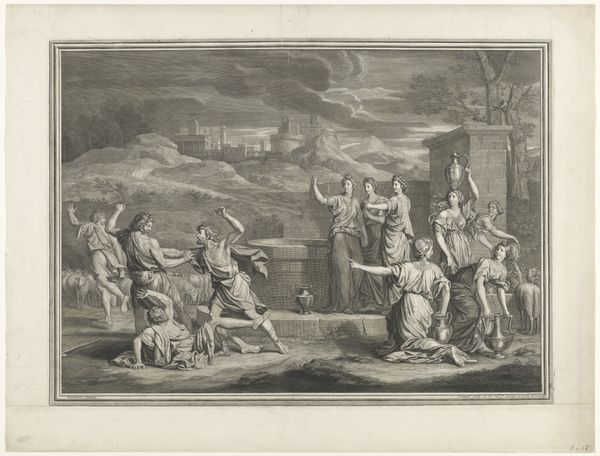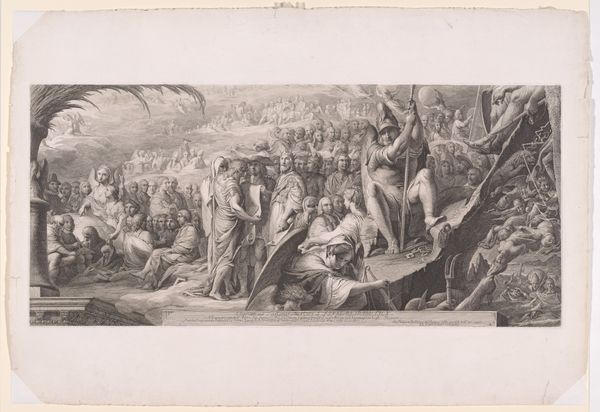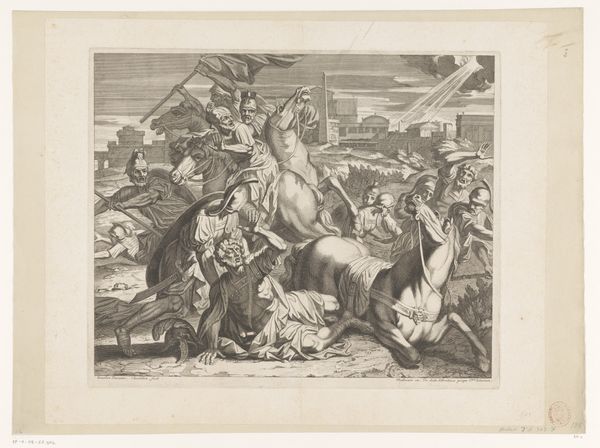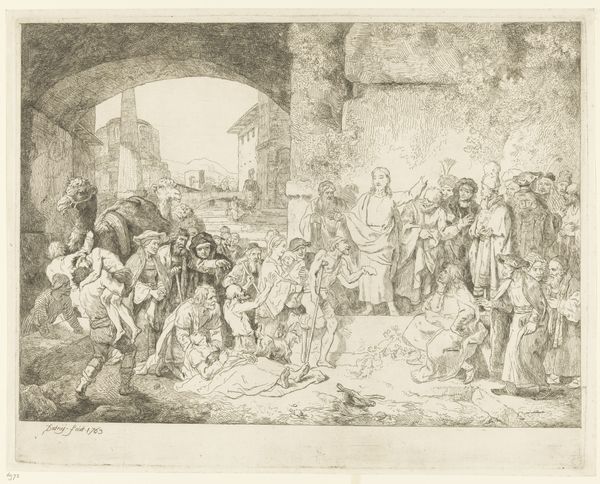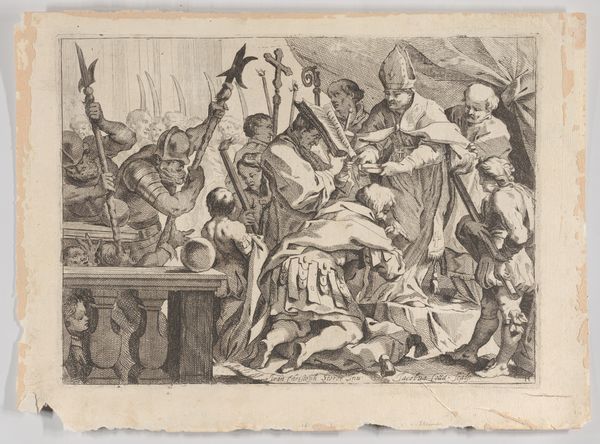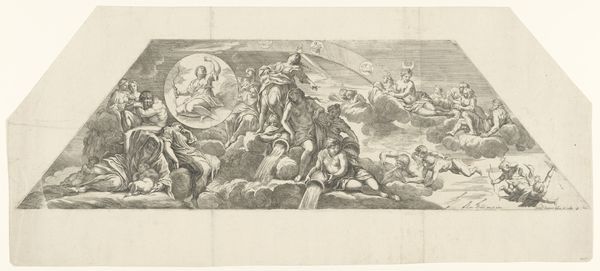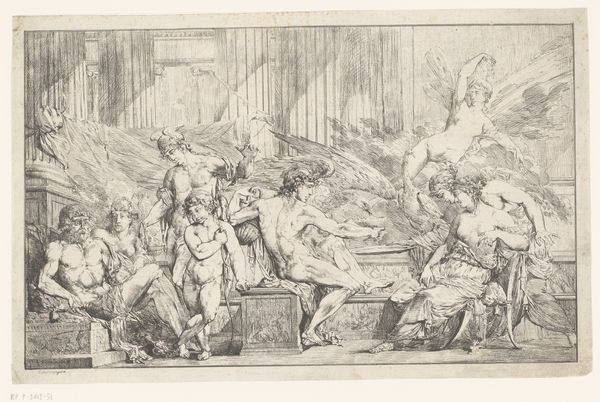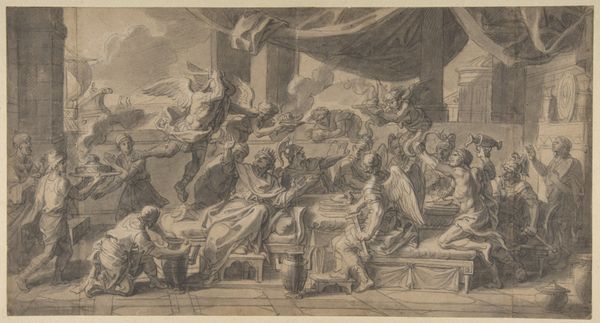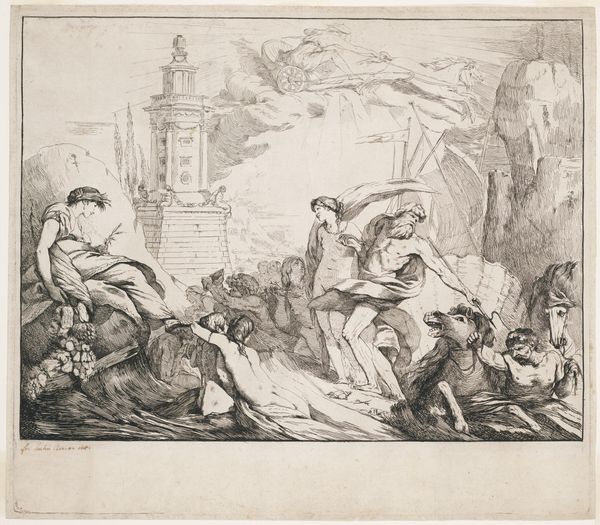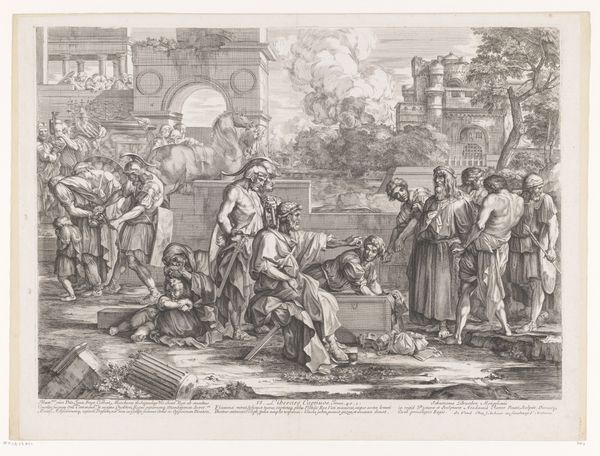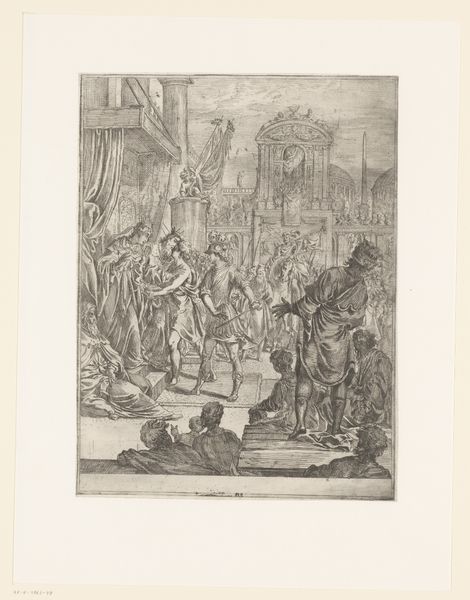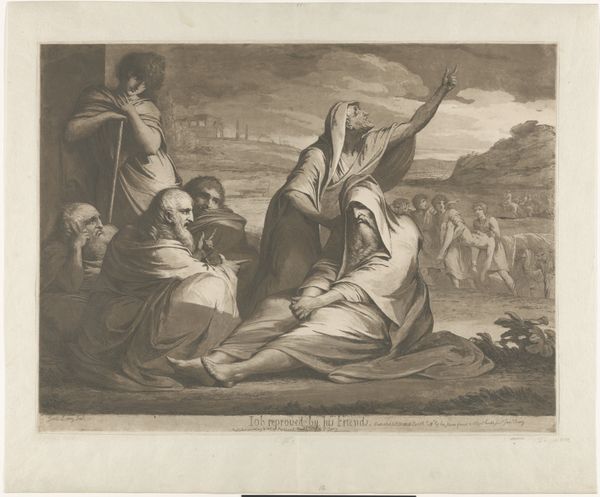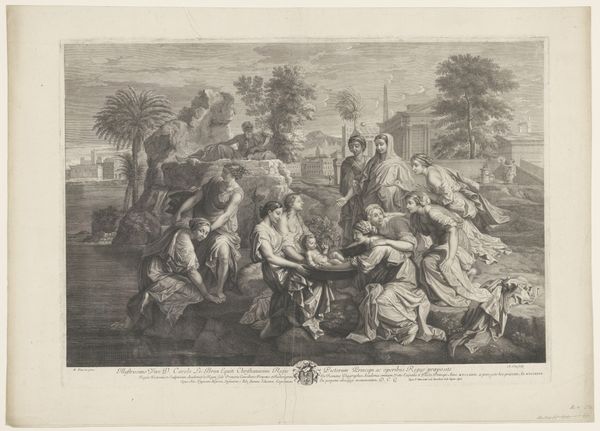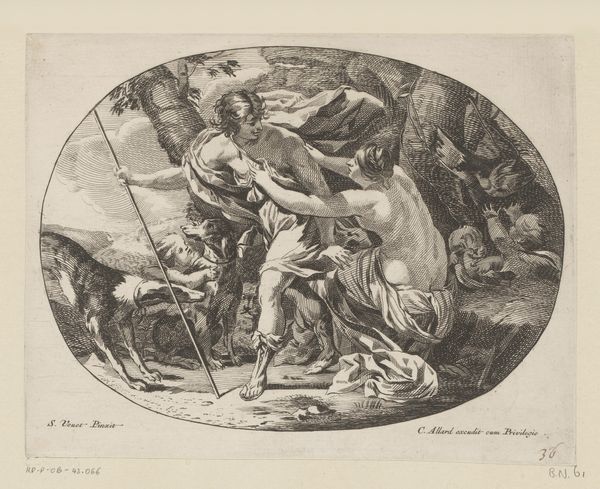
drawing, pencil, charcoal
#
pencil drawn
#
drawing
#
neoclacissism
#
narrative-art
#
charcoal drawing
#
figuration
#
pencil drawing
#
pencil
#
line
#
charcoal
#
history-painting
#
academic-art
#
realism
Dimensions: height 252 mm, width 567 mm
Copyright: Rijks Museum: Open Domain
This is Christian Bernhard Rode’s rendering of "Agrippina met de as van Germanicus," made with pen and grey ink in the 18th century, and currently held in the Rijksmuseum. The composition, rendered in delicate monochromatic tones, depicts a scene teeming with figures and architectural elements. Its formal arrangement—a balance between detailed foreground and a hazier background—suggests a staged drama, evocative of classical theatre. The artwork illustrates a pivotal moment from Roman history, laden with political and familial tension. Agrippina's return with the ashes symbolizes both grief and defiance. Rode uses the semiotic language of Neoclassicism to underscore themes of mourning, remembrance, and the continuity of power through lineage. The architecture is used not merely as a backdrop but as a structural device, framing the narrative and adding layers of historical and cultural significance. Note how the linear precision of the draftsmanship, combined with the restrained use of shading, creates a visual field charged with narrative potential. It encourages us to interpret the scene not just as a historical event but also as a tableau of enduring human struggles. The artwork becomes a site where classical ideals meet Enlightenment sensibilities.
Comments
No comments
Be the first to comment and join the conversation on the ultimate creative platform.
